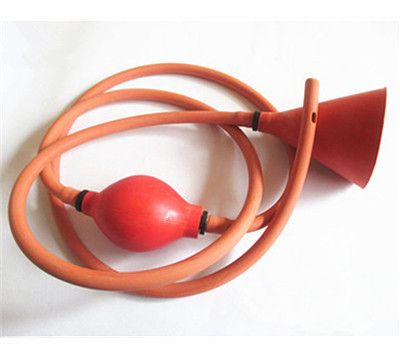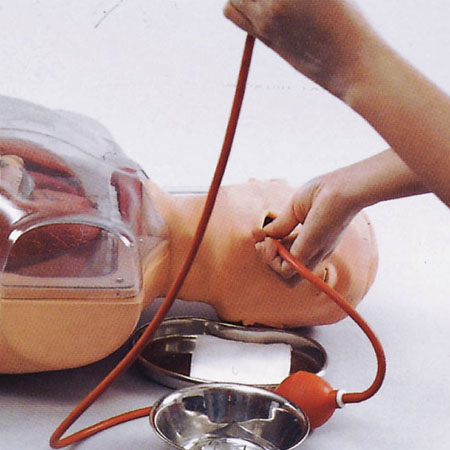Table of Contents
ToggleCarry Out Gastric Lavage
Gastric lavage is the process of cleaning out stomach contents.
Gastric lavage is a gastrointestinal decontamination technique that aims to empty the stomach of toxic substances by the sequential administration and aspiration of small volumes of fluid via a nasogastric tube or stomach tube.
Gastric lavage is the process of washing out of the stomach via a nasogastric tube or stomach tube.
Lavage is ordered to wash out the stomach (after ingestion of poison or an overdose of medication, for example) or to control gastrointestinal bleeding. If the patient does not have a nasogastric tube in place already, the physician will order the insertion of the appropriate tube.
Indications for Gastric Lavage:
- Ingestion of toxic substances: Gastric lavage is indicated when a patient has swallowed anything unwanted or poisonous. It is a method to remove toxic substances from the stomach before they are absorbed into the systemic circulation.
- Pre-endoscopic procedure: Gastric lavage can be performed to clear the contents of the stomach before an upper endoscopic procedure. This helps to improve visualization during the procedure.
- Collection of stomach acids for testing: Gastric lavage can be used to collect stomach acids for diagnostic testing.
- Relief of gastric pressure: Gastric lavage can be used to relieve pressure in the stomach in cases where there is a blockage in the stomach or nearby areas like the intestine. This can help alleviate symptoms and prevent complications.
- Collection of sputum in children: Gastric lavage is useful in collecting sputum samples from children who cannot produce it. It is a preferred procedure for children suspected of having pulmonary tuberculosis.
- Cooling technique in hyperthermic patients: Gastric lavage can be used as a cooling technique in hyperthermic patients. By irrigating the stomach with cool fluids, it helps to lower the body temperature.
- Diagnostic tool for gastric hemorrhage: Gastric lavage can be used to diagnose inflammatory conditions like gastric hemorrhage. Through examining the lavage fluid about the presence and severity of bleeding.
- Poisoning cases: Gastric lavage is commonly performed in cases of poisoning, especially when it is life-threatening or when the patient’s history is not available. It can help remove toxic substances from the stomach and reduce the absorption of the poison.
- Ingestion of substances: Also used incases of;
- Ingestion of potentially life threatening substances e.g. chloroquine, cyclic antidepressants e.g. amitriptyline, imipramine.
- Ingestion of large amounts of a substance not absorbed to charcoal e.g. iron, lithium.
- Ingestion of substance which have propensity to form bezoars (a mass found trapped in the GIT) e.g. iron salicylates such as aspirin, acetylsalicylic acid
Contraindications of Gastric Lavage:
- Comatose and convulsing patients: Gastric lavage should not be performed on patients who are comatose or experiencing seizures.
- Ingestion of a corrosive substance: Gastric lavage is contraindicated in cases where the ingested substance is a strong acid or strong alkaline, as it can cause further damage to the esophagus and stomach.
- Pills too large for lavage tube: If the pills or tablets ingested are too large to pass through the lavage tube, gastric lavage should not be performed.
- Patients at risk of hemorrhage or gastrointestinal perforation: Individuals who have a pre-existing condition that puts them at risk of bleeding or gastrointestinal perforation should not undergo gastric lavage.
- Ingestion of hydrocarbons and detergent: Gastric lavage is contraindicated in cases of ingestion of substances such as ethanol (a hydrocarbon) and detergent.
- The poison ingestion is not toxic at any dose: If the ingested poison is not toxic at any dose, gastric lavage is not necessary.
- The poison ingestion is adsorbed by charcoal and adsorption is not exceeded by the quantity ingested: If activated charcoal can effectively adsorb the poison and the quantity ingested does not exceed the adsorption capacity, gastric lavage may not be required.
- Presentation many hours after poisoning: If the patient presents several hours after the poisoning incident, gastric lavage may not be beneficial.
- A highly efficient antidote is available: If there is a highly efficient antidote available for the ingested poison, gastric lavage may not be necessary.
Complications of Gastric Lavage:
- Increase gastric delivery of tablets into the small bowel: Gastric lavage can potentially push tablets or pills further into the small bowel, increasing their absorption .
- Aspiration of gastric contents: There is a risk of aspiration, where the gastric contents can enter the lungs, leading to respiratory complications. This occurs in approximately 3% of patients undergoing gastric lavage .
- Esophageal rupture: Although rare, there is a risk of esophageal rupture during the lavage procedure .
- Cardiac complications: In certain poisonings, such as those involving propranolol or calcium channel blockers, gastric lavage can precipitate extreme bradycardia, cardiac arrest, and asystole due to the effects on cardiac conduction .
- Nasal trauma: Insertion of the lavage tube can cause nasal trauma.
- Tracheal intubation: In cases where the airway is unprotected, tracheal intubation may be required before performing gastric lavage.
- Electrolyte imbalance and hypothermia: The administration of large volumes of fluid during gastric lavage can potentially lead to electrolyte imbalances and hypothermia.

Procedure for Gastric Lavage
Gastric lavage is a clean procedure.
Requirements
Trolley
Top Shelf | Bottom Shelf | At the Bed Side |
– Rubber tubing, stomach tube, funnel | – Mackintosh cape and towel | – Suction machine if the patient is unconscious |
– Connection and clip | – Receiver | – Hand washing facilities |
– 2 Gallipots | – Jar for stomach contents | – Screens |
– Bowl of swabs | – Lubricant | |
– Vomitus bowl | – Adhesive strapping | |
– 20 ml syringe | – Bucket for collecting stomach contents | |
– Litmus paper | – 3 receivers | |
– Jar of water |
Procedure for Gastric Lavage
Steps | Action | Rationale |
1. | Follow the general rules.
| To enable cooperativeness. To ensure privacy. To prevent unnecessary movement. |
2. | Place a bucket on the floor at the bedside. | To collect wastes. |
3. | Request the patient to sit up if conscious. If unconscious, put the patient in a prone position and place a mackintosh cape and towel around the patient’s neck and bed clothes. | To protect the bed and patient. |
4. | Connect up the funnel to the tubing using a connector but keep the stomach tube separate until it has been passed. | To prevent aspiration of the fluid by the patient. |
5. | Lubricate the tube and pass it over the tongue into the pharynx and esophagus. | To ease passage of the tube. |
6. | Keep on asking and encouraging the patient to swallow. | To gain patient’s cooperation. |
7. | Connect the syringe on the tube and withdraw some stomach content. | To ensure that the tube is in the stomach. |
8. | Test the stomach content with a litmus paper to confirm that you are in the stomach. | Acidic stomach content will turn blue litmus paper red. |
9. | Clip the stomach tube with an artery forceps and place it in the receiver. | To prevent backflow of stomach contents. |
10. | Apply a clip to the funnel and tubing then attach it to the stomach tube. | To prevent the flow of fluids before starting the procedure. |
11. | Open the clip and allow approximately 300 mls of fluid to run into the lower funnel until level begins to rise; invert the funnel into the bucket to siphon out the stomach contents. Repeat the procedure until the fluid which is returning is clear. Note the nature of the stomach contents. | To empty the stomach of unwanted or harmful contents. |
12. | Clip the stomach tube, withdraw it from the stomach evenly and quickly, disconnect the tube from the funnel and tubing and place it in the receiver. | To prevent trauma to the patient. |
13. | Give the patient a mouthwash, thank him and clear away the requirements. | To encourage patient’s comfort. |
14. | Wash your hands and document the findings. (a). Type and amount of lavage solution used. (b). Appearance, odor, color, and amount of gastric return. (c). Patient’s tolerance to procedure. (d). Disposition of specimens. Clear away all the requirements. |


Great
The notes are excellent
This has made reading aaeasy thanks alot 👍
it is good initiative to support student
I did it yesterday but I missed very many steps, now with this,,am now fully prepared😋😋
I hope to be the best medic with this knowledge
This note was well prepared which made it easier to read and understand .I am so grateful because I have learned allot from this
I love diz work…thanks 🙏
Too good to revised coz de notes are precise
Good notes